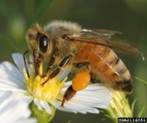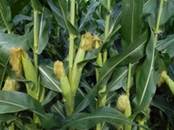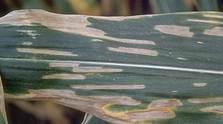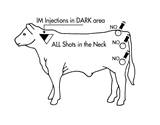Hello,
Are you ready for the Hardin County Fair? It’s almost here as this year’s county fair runs from September 3-8. I hope to see you there supporting both the Jr. and Sr. Fair exhibitors. We’ve been busy setting up displays and booths so hopefully you will visit them and I will get a chance to meet more producers and agribusiness people while at the fair. If you are available, offer to volunteer in the different commodity group food stands as I am sure they would appreciate your help.
One upcoming event that I have been planning is this year’s Hardin County Fair Carcass Show of Champions. It will be held at Mt. Victory Meats on September 10, starting at 6:00 pm. Once again it will feature the grand champion and reserve champion steers, barrows, gilts, lambs, and goats. Come see how the champions do on the rail. The event is sponsored by Mt. Victory Meats, the Hardin County Fairboard, the Hardin County Sheep Improvement Association, the Hardin County Cattle Producers, and the Hardin County Pork Producers. I have attached a press release and flier about the event to this email.
Carcass Show News Release 2013 carcass show flier
The Dairy Service Unit has begun their fall cheese sale. Order forms can be obtained at the Extension Office (419-674-2297) at 1021 W. Lima St. Suite 103 in Kenton or online at hardin.osu.edu. Deadline for ordering cheese is October 22, with pick-up dates November 1st from 12:00 p.m. to 7:00 p.m. or November 2nd from 9:00 until 12:00 p.m. at the home of Dan and Molly Wagner. See the attached press release and order form for more information.
Cheese Sale news release Cheese sale fall
This week I spent two days scouting soybean fields and noticed both immature and adult lady beetles feeding on aphids. One field had both immature and adult green and also brown stink bugs. Aphid populations seem to be on the decline as most beans are now in the beginning-full seed stage. When you are scouting for stink bugs, look for damage to the pods. See the article below for more specific information.
Area classes are forming for new Master Gardeners in Union County and Allen County. Is there anyone out there interested in becoming a Master Gardener? Interested people can be trained out of county and then serve Hardin County. Let me know if you want to learn more about this educational program.
This month’s Ag Council meeting will be held a week later than normal due to the Hardin County Fair. Join us for breakfast and sharing ag information at Henry’s Restaurant in Kenton Friday, September 13 starting at 7:00 am.
Have a nice Labor Day weekend and remember that Ohio State football kicks off tomorrow at noon. Below are some articles and additional information that you may be interested in reading.
GO BUCKS!
Mark
Statewide Sheep Shearing School – September 20-21, from 9:00 a.m.-4:00 p.m. – Dave Cable Farm, 10491 Canal Rd., Hebron, OH 43025.
This program is being provided to hopefully gain people that are interested in learning how to shear sheep. There is a real need in many areas of the state of Ohio for qualified sheep shearers. If you know of someone that might be interested be pass this information along to them so that we have an adequate sized class to hold the school. See the attached flier for more information.
2013 Sheep Shearing School registration form
Late Season Soybean Insects – Ron Hammond, Andy Michel
As the season winds down, soybean growers need to continue scouting their fields, especially those later planted fields that will remain green well into September. As other fields in the area begin maturing and turning yellow, some insects will migrate to soybeans that are still green and continue their feeding. Two of those insects, with one being a complex, are second generation bean leaf beetles and the stink bug complex consisting of the green, the red shouldered, and perhaps the brown marmorated stink bug. These insects feed on the pods and seeds of the plant, causing direct damage to the harvestable part of the soybean. Go to http://corn.osu.edu/newsletters/2013/2013-27/late-season-soybean-insects to find out more information.
Quality Corn Silage Production – Rory Lewandowski, Extension Educator Wayne County
Corn silage has the reputation as a reliable and economic feedstuff. Corn silage is widely used in ruminant livestock rations, particularly with cattle, but I have also seen it used with sheep as well. A good thought to keep in mind is that the quality of the corn silage you produce this fall will affect your livestock for many months in to the future. Producing high quality silage depends upon good management practices at several different steps. Go to http://beef.osu.edu/beef/beefAug2813.html to read more.
Multicolored Asian Lady Beetle – Ron Hammond, Andy Michel
One of the consequences of this past summer having been a soybean “aphid year” is the development of large populations of the multicolored Asian lady beetle in soybean fields where aphids were numerous. When walking through such fields, it is easy to see many lady beetle larvae and adults on top of the plants. From the soybean’s perspective, this is a good thing because the lady beetles will help to reduce aphid populations. Find out more about this beneficial insect athttp://corn.osu.edu/newsletters/2013/2013-28/multicolored-asian-lady-beetle.
Estimating Soybean Yield – Laura Lindsey
To estimate yield, four soybean yield components need to be considered: plants per acre, pods per plant, seeds per pod, and seeds per pound (seed size). It is difficult to accurately predict soybean yield because of plant variability, but estimates become more accurate as the growing season progresses. If you want to estimate the yield of your soybean crop, go tohttp://corn.osu.edu/newsletters/2013/2013-28/estimating-soybean-yield to find out how.
Mark A. Badertscher
Agriculture and Natural Resources Educator
OSU Extension Hardin County
1021 W. Lima Street, Suite 103, Kenton, OH 43326
419-674-2297 Office
























